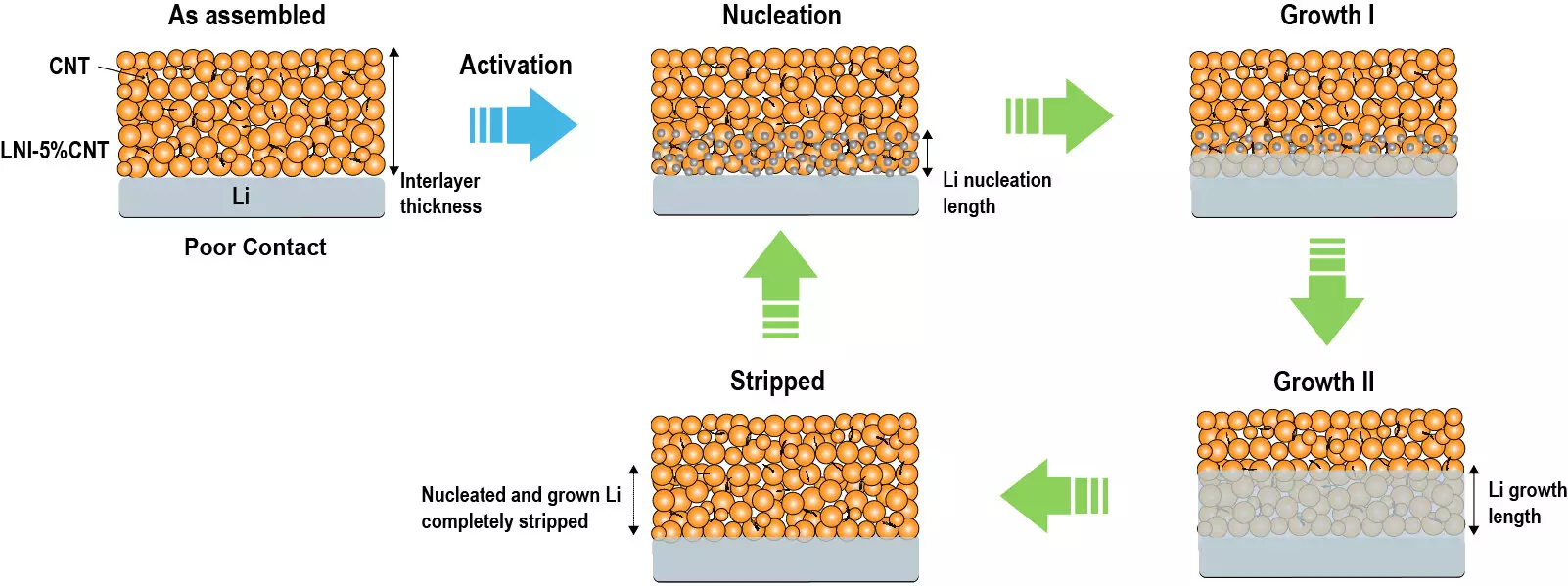In recent years, engineers and chemists have been dedicating their efforts to advancing battery technologies in order to meet the increasing demands of the electronics industry. One of the promising developments in the field is the emergence of all-solid-state batteries (ASSBs). Unlike conventional lithium-ion batteries (LiBs), ASSBs consist of a solid electrolyte positioned between two electrodes. These batteries, particularly all-solid-state lithium-metal batteries (ASSLBs), show potential for high energy densities and improved safety. However, despite their advantageous properties, ASSLBs are yet to be widely deployed due to limitations such as the growth of Li dendrites and their high interface resistance hampering performance.
Researchers from the University of Maryland have recently introduced a new principle for designing safe and high energy ASSLBs, addressing the challenges that have hindered their large-scale implementation. The principle, discussed in a publication in Nature Energy, offers guidance for developing a series of interlayers that can effectively resolve the issue of Li dendrite growth in ASSLBs. Unlike previous methods of tackling this problem which relied on trial-and-error approaches, this new approach provides a systematic and comprehensive solution.
One of the key aspects of the research carried out by Wang and his team was to identify a promising strategy to mitigate Li dendrite growth in ASSLBs. They proposed the introduction of a special layer between the lithium anode and solid electrolyte in battery cells. However, the properties of this interlayer play a crucial role in achieving this objective. The researchers have established a design principle that emphasizes the interlayer’s need to be lithiophobic (repelled by lithium metal), highly ionic conductive, slightly electronic conductive, and porous.
To validate their design principle, the researchers created a Li4SiO4@LiNi0.8Mn0.1Co0.1O2/Li6PS5Cl/20 µm-Li battery cell with an area capacity of 2.2 mAh cm-2. This battery cell demonstrated remarkable performance in initial tests, retaining 82.4% of its capacity after 350 operation cycles at 60° C and a rate of 0.5 C. This achievement showcases the potential effectiveness of the design principle in enabling the development of safe and high-performing battery technologies.
The design principle proposed by Wang and his colleagues shows promise for application in a wide range of ASSBs. By suppressing Li dendrite formation, this principle can significantly enhance the performance of batteries containing solid electrolytes, which are crucial for the powering of electric vehicles and other large electronics. The successful implementation of this principle opens up opportunities for further research and development, enabling the modification and optimization of interfaces based on these design principles. The researchers envision continued studies to test more interfaces and refine the design principle, paving the way for the future realization of advanced battery technologies.
The advancement of battery technologies is crucial to meet the increasing demands of the electronics industry. All-solid-state batteries, particularly all-solid-state lithium-metal batteries, demonstrate potential for high energy densities and improved safety. However, challenges such as Li dendrite growth and high interface resistance have limited their widespread deployment. The new design principle introduced by researchers at the University of Maryland offers a systematic and comprehensive solution to these challenges. By providing guidance for the development of interlayers with specific properties, this principle has the potential to revolutionize the design of safe and high energy ASSLBs. With further research and refinement, this design principle could pave the way for the realization of advanced battery technologies that can power electric vehicles and other large-scale electronics.


Leave a Reply